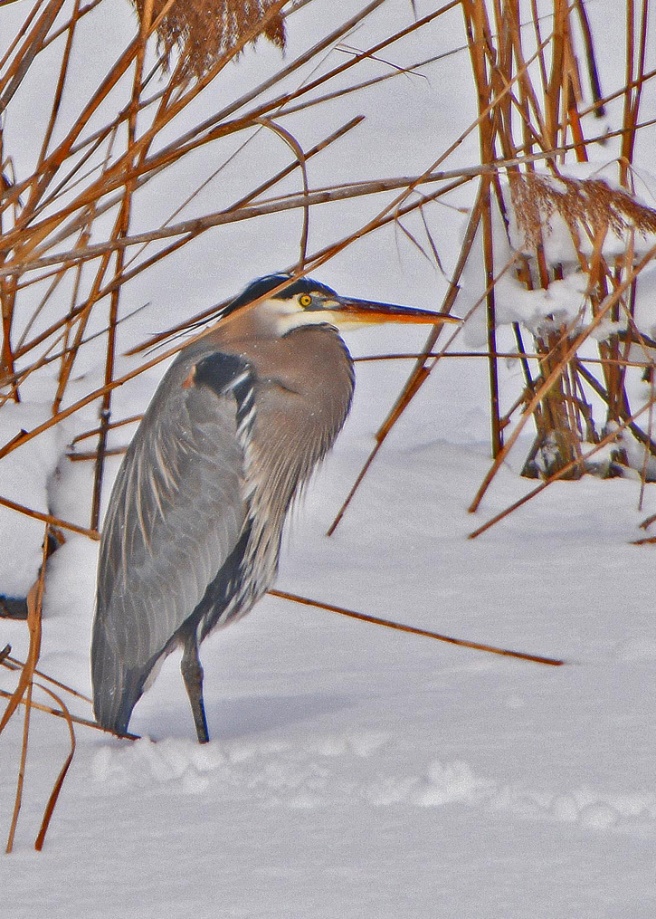
Rural Perspectives
Great blue herons are easy to identify in flight
by Diane Constable

weather turns cold, but others stay in the
area year-round. Photo credit Diane Constable
The great blue heron (Ardea herodias) is one of the largest wading birds, with a height up to 4.5 feet, a wingspan of nearly 6.5 feet, and a weight of 5-6 pounds. Although some great blue herons migrate when the weather turns cold, others stay here year-round.
Usually solitary birds, they can be seen wading near marshes, streams, and lakes—anywhere they can fish. Herons move very slowly or will stand stock-still waiting for food to come by. They have a unique bone structure in their neck that allows them to strike lightning-fast to stab the prey with their bills before swallowing the prey whole. Although they eat fish for a good part of the diet, herons also feed on insects, snakes, and small mammals. In winter, they will look for mice, voles and other small mammals on land. They often eat food wider than their neck, which stretches to accommodate a big meal.
While herons are normally solitary, in spring they gather in colonies to build their nests, usually in a group of large trees. There can be more than 100 or more nests, several per tree, in these rookeries. The male gathers sticks to build the nest, and the female builds the nest, which is quite large. The nests can be up to 4 feet wide and are reused each year.
A heron’s three to six eggs hatch in about 28 days, and the young herons can fly in about 55 days; however, they stick around the nest for another three weeks before they can feed on their own. Both parents care for the eggs and chicks. Herons can live for about 15 years.
These birds are easy to identify while flying. Unlike sandhill cranes, who also dangle their legs behind them, blue herons curl their necks like an “s” in flight, while the cranes fly with their necks straight out.
Fun Fact: Blue herons have special down feathers on their chest that grow constantly. They have a special claw on one of their toes to comb these loose powdery feathers. Then the herons use the feathers to wash off the fish marsh slime from their lower bodies.
 As an avid photographer, Diane Constable regularly puts her formal education in both nature and photography to good use. Diane also enjoys gardening and her dogs and serves on the board of the Ann Arbor Dog Training Club.
As an avid photographer, Diane Constable regularly puts her formal education in both nature and photography to good use. Diane also enjoys gardening and her dogs and serves on the board of the Ann Arbor Dog Training Club.



